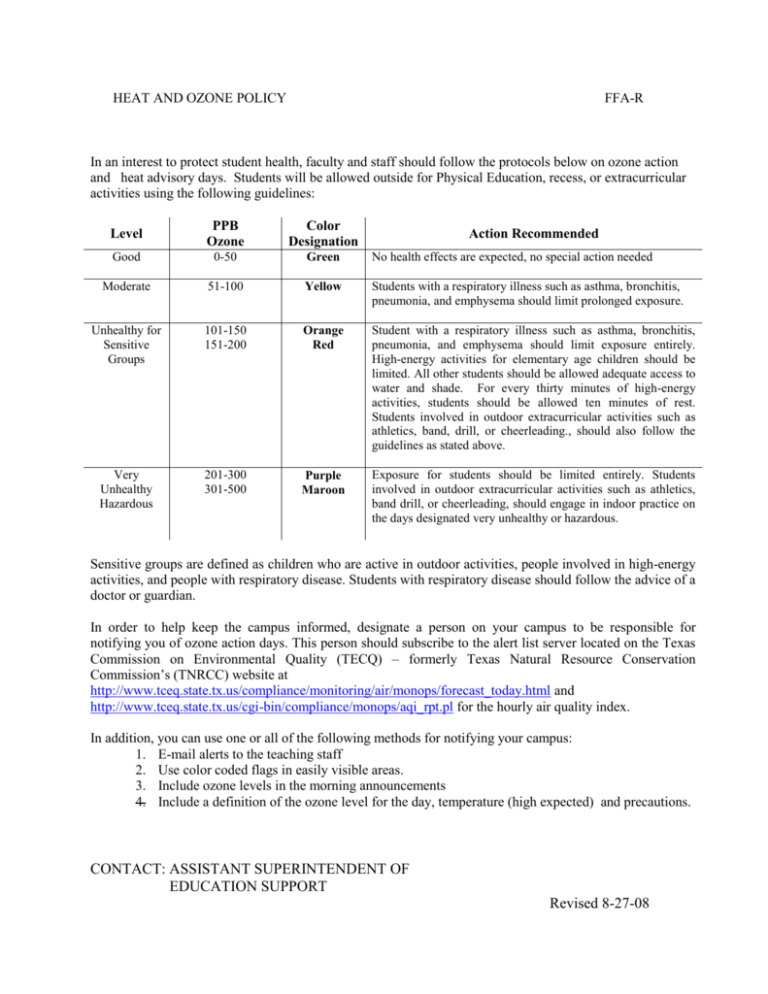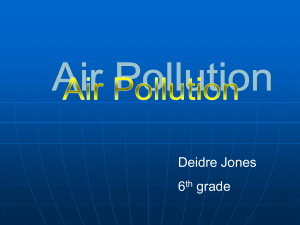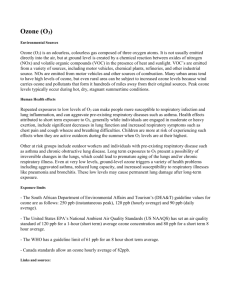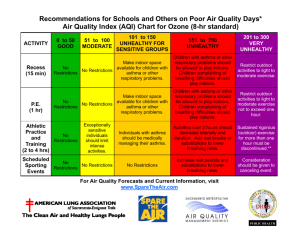HEAT AND OZONE POLICY
advertisement

HEAT AND OZONE POLICY FFA-R In an interest to protect student health, faculty and staff should follow the protocols below on ozone action and heat advisory days. Students will be allowed outside for Physical Education, recess, or extracurricular activities using the following guidelines: Level PPB Ozone Color Designation Good 0-50 Green No health effects are expected, no special action needed Moderate 51-100 Yellow Students with a respiratory illness such as asthma, bronchitis, pneumonia, and emphysema should limit prolonged exposure. Unhealthy for Sensitive Groups 101-150 151-200 Orange Red Student with a respiratory illness such as asthma, bronchitis, pneumonia, and emphysema should limit exposure entirely. High-energy activities for elementary age children should be limited. All other students should be allowed adequate access to water and shade. For every thirty minutes of high-energy activities, students should be allowed ten minutes of rest. Students involved in outdoor extracurricular activities such as athletics, band, drill, or cheerleading., should also follow the guidelines as stated above. Very Unhealthy Hazardous 201-300 301-500 Purple Maroon Exposure for students should be limited entirely. Students involved in outdoor extracurricular activities such as athletics, band drill, or cheerleading, should engage in indoor practice on the days designated very unhealthy or hazardous. Action Recommended Sensitive groups are defined as children who are active in outdoor activities, people involved in high-energy activities, and people with respiratory disease. Students with respiratory disease should follow the advice of a doctor or guardian. In order to help keep the campus informed, designate a person on your campus to be responsible for notifying you of ozone action days. This person should subscribe to the alert list server located on the Texas Commission on Environmental Quality (TECQ) – formerly Texas Natural Resource Conservation Commission’s (TNRCC) website at http://www.tceq.state.tx.us/compliance/monitoring/air/monops/forecast_today.html and http://www.tceq.state.tx.us/cgi-bin/compliance/monops/aqi_rpt.pl for the hourly air quality index. In addition, you can use one or all of the following methods for notifying your campus: 1. E-mail alerts to the teaching staff 2. Use color coded flags in easily visible areas. 3. Include ozone levels in the morning announcements 4. Include a definition of the ozone level for the day, temperature (high expected) and precautions. CONTACT: ASSISTANT SUPERINTENDENT OF EDUCATION SUPPORT Revised 8-27-08











